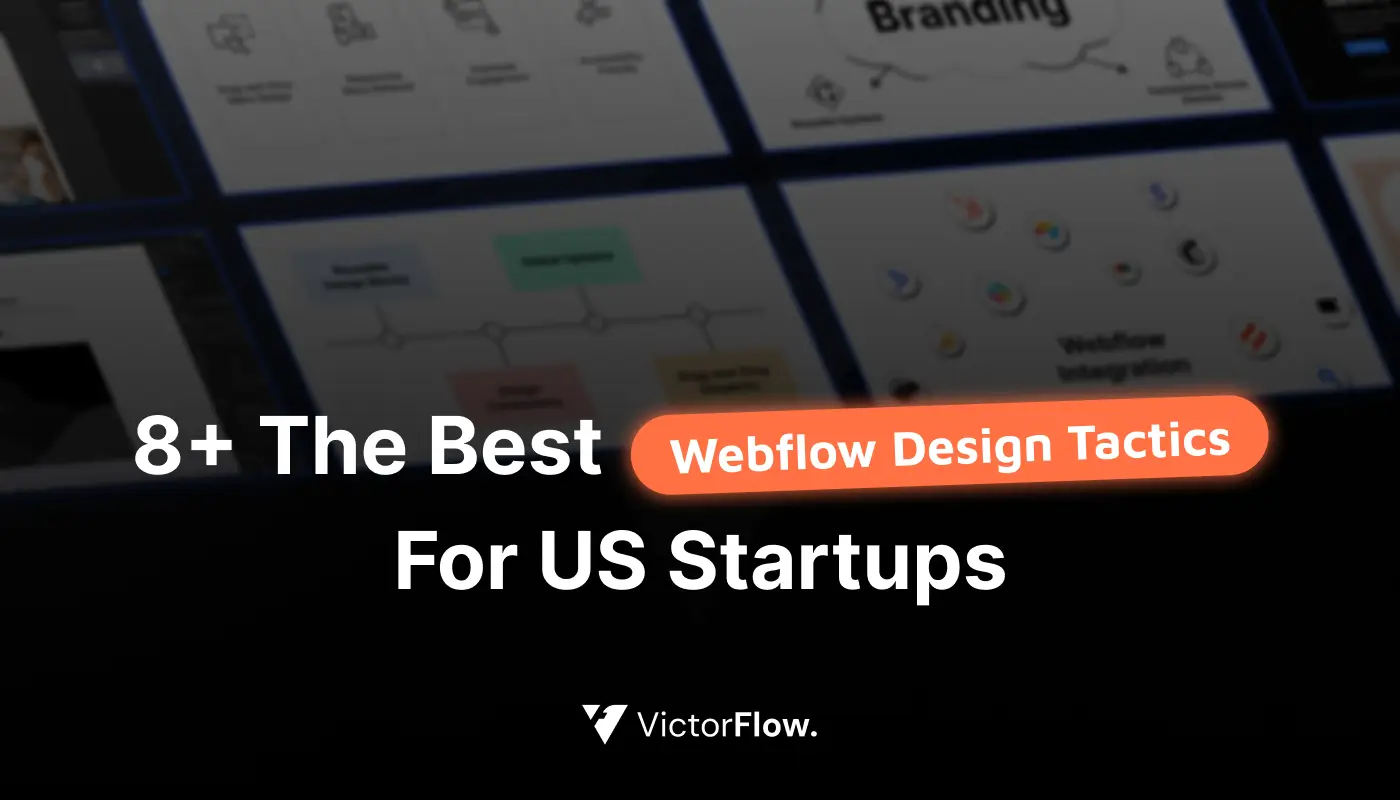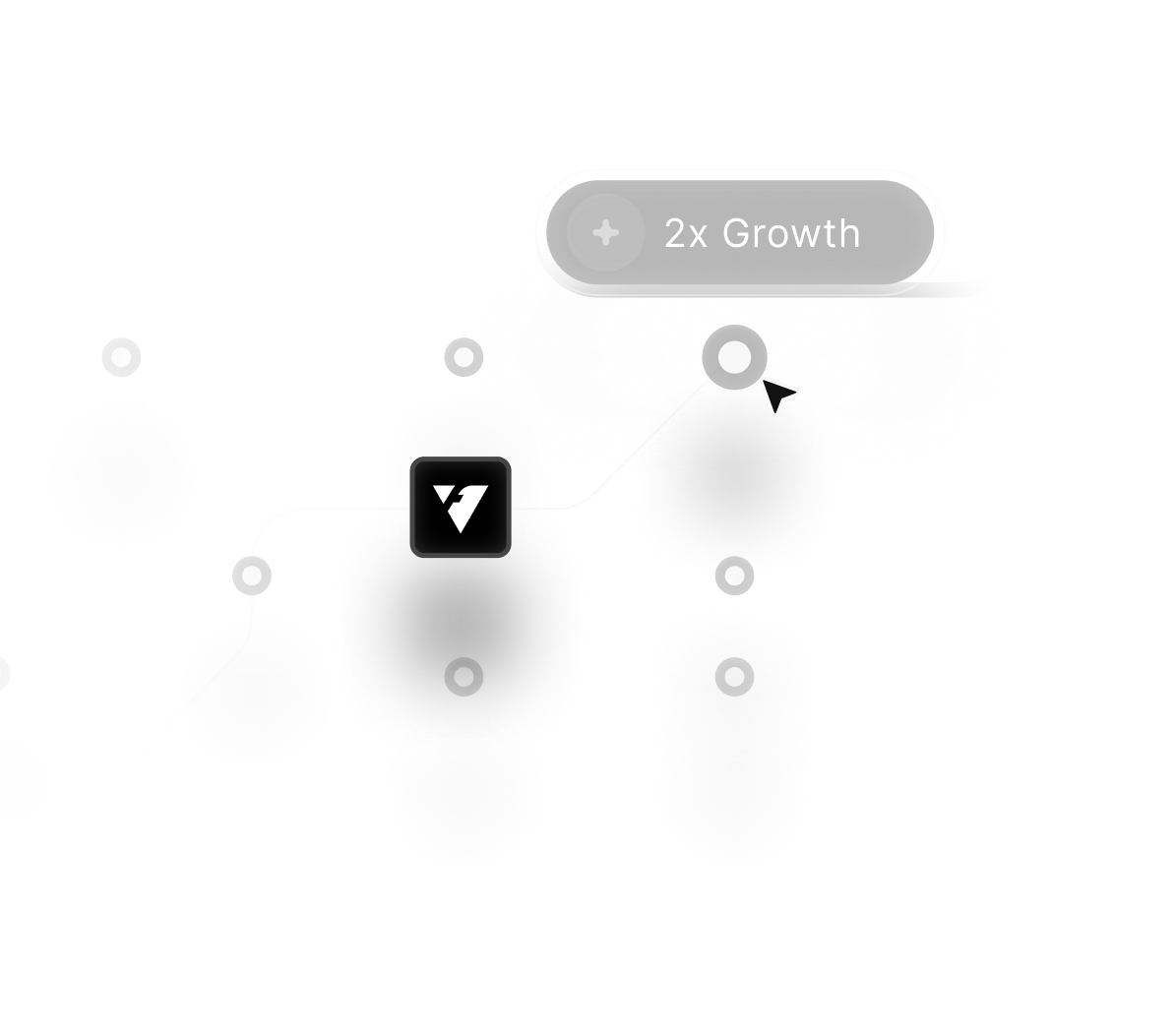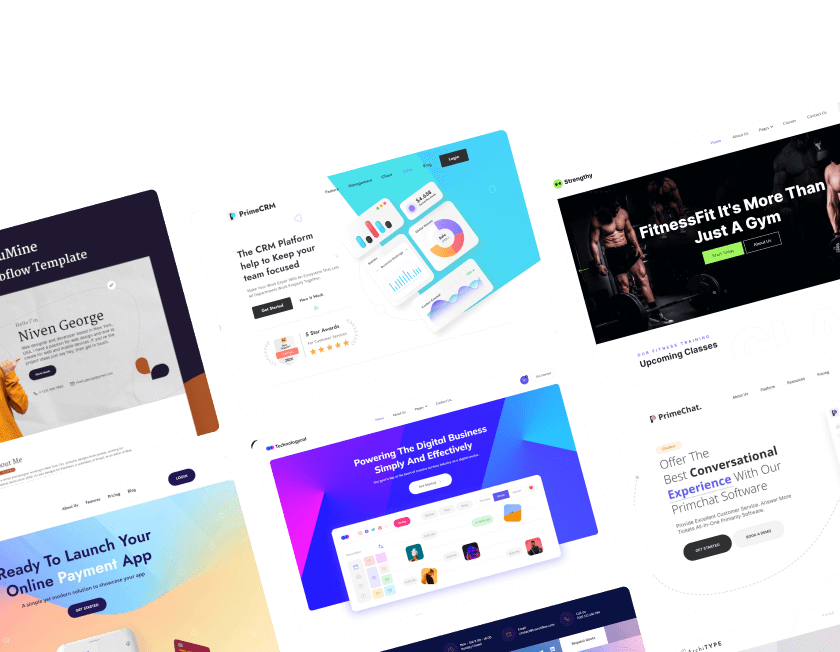November 12, 2025
Build a Stunning Portfolio Using SaaS Website Platforms in 2025

SaaS website platforms redefine how creatives and professionals showcase their portfolios across industries and audiences. Cloud-based tools make it possible to launch professional websites quickly without relying on heavy technical expertise.
Design freedom merges beautifully with scalability, allowing users to express their personal brand online with confidence. Portfolio builders powered by SaaS integrate templates, hosting, and analytics to simplify digital presence creation.
Integrated workflows keep websites consistent while providing flexibility to update projects instantly from anywhere. Advanced editors empower creators to experiment with typography, color, and motion for better storytelling impact.
Cross-platform compatibility ensures visitors experience smooth navigation on any device or browser environment. Performance and SEO optimization come built-in, helping portfolios rank higher and attract the right audience.
Professionals can link case studies, galleries, and testimonials seamlessly into responsive layouts effortlessly. SaaS website platforms offer the balance of design innovation and simplicity that today’s creators truly need.
"Craft your digital portfolio beautifully through SaaS website.
Book your complimentary review call today."
Table of Contents
- What are SaaS Website Platforms?
- Benefits of Using SaaS For Portfolio Building
- Top SaaS Platforms For Portfolio Websites in 2025
- Wix
- Squarespace
- Weebly
- Webflow
- WordPress.com
- Key Features to Look For in a SaaS Portfolio Platform
- How to Build Your Portfolio Using a SaaS Platform?
- Step 1: Choose Your Platform
- Step 2: Sign Up
- Step 3: Select a Template
- Step 4: Customize Your Site
- Step 5: Optimize for SEO
- Step 6: Publish and Promote
- Best Practices For an Effective Portfolio
- Common Mistakes to Avoid
1. What are SaaS Website Platforms?

SaaS website platforms are cloud-based services that provide users with the tools to create and manage websites without needing to install or maintain software on their local devices.
These platforms typically come with a range of customizable templates, drag-and-drop editors, and various features that make it easy for anyone to design a professional-looking website.
Key Characteristics of SaaS Platforms
- Accessibility: SaaS platforms can be accessed from any device with an internet connection, allowing users to manage their portfolios on the go.
- Subscription-Based Model: Users typically pay a monthly or annual fee, which often includes hosting, support, and updates.
- Scalability: Many SaaS platforms offer various plans that cater to different needs, allowing users to upgrade or downgrade as necessary.
- Integrated Features: SaaS platforms often come with built-in tools for SEO, analytics, and marketing, streamlining the process of managing your online presence.
2. Benefits of Using SaaS For Portfolio Building

Ease of Use
One of the main advantages of SaaS platforms is their user-friendly interfaces.
With drag-and-drop functionality and intuitive design tools, even those with little to no technical experience can create a stunning portfolio.
This eliminates the need for hiring a web developer or spending countless hours learning to code.
Cost-Effective Solutions
Building a portfolio can be expensive, especially if you hire professionals. SaaS platforms typically offer affordable subscription plans, making them a cost-effective choice for freelancers and startups.
Many platforms also provide free trials or basic free plans, allowing you to test their features before committing.
Responsive Design
As mobile internet usage continues to rise, having a responsive design is critical.
Most SaaS platforms offer templates that automatically adjust to different screen sizes, ensuring that your portfolio looks great on desktops, tablets, and smartphones.
Built-in SEO Tools
Search Engine Optimization (SEO) is essential for increasing the visibility of your portfolio.
SaaS platforms often include built-in SEO tools that help you optimize your website for search engines, making it easier for potential clients to find you.
Regular Updates and Security
Security is a top priority for any online presence. SaaS providers regularly update their software to protect against vulnerabilities and ensure that users have access to the latest features.
This means you won’t have to worry about manual updates or security patches.
3. Top SaaS Platforms For Portfolio Websites in 2025

Choosing the right SaaS platform is crucial for building a successful portfolio. Here are some of the top SaaS platforms to consider in 2025:
Wix
Wix is one of the most popular website builders globally, known for its versatility and ease of use. With a wide variety of templates specifically designed for portfolios, Wix allows users to create a unique online presence.
Key Features:
- Drag-and-Drop Editor: Customize your site without any coding knowledge.
- Integrated Blogging: Share insights and updates with an integrated blog feature.
- SEO Tools: Built-in tools help optimize your portfolio for search engines.
- App Market: Extend the functionality of your portfolio with various apps.
Squarespace
Squarespace is known for its sleek, modern templates that appeal to creatives. It offers a wide range of customization options, making it ideal for designers and photographers.
Key Features:
- Responsive Templates: Ensure your portfolio looks great on any device.
- E-commerce Capabilities: Sell products or services directly through your portfolio.
- Analytics Dashboard: Track visitor engagement and performance metrics.
Weebly
Weebly is an easy-to-use platform that caters to beginners and those looking for simplicity. It provides essential features for building a portfolio, such as:
Key Features:
- Drag-and-Drop Builder: Intuitive design process for creating your site.
- Integrated Marketing Tools: Tools for email marketing and social media integration.
- App Center: Expand functionality with third-party applications.
Webflow
Webflow is a more advanced platform, ideal for those with a bit of design experience. It offers flexibility and control over the design elements of your portfolio.
Key Features:
- Design Flexibility: Create custom layouts and designs using a visual editor.
- CMS Functionality: Easily manage and update your portfolio content.
- Code Export: Export your project as HTML/CSS if needed.
WordPress.com
WordPress.com is a popular choice for many, offering a vast library of themes and plugins. It's an excellent platform for those who want both a portfolio and a blog.
Key Features:
- Large Community: Extensive support and resources available.
- Customizable Themes: A wide selection of themes specifically designed for portfolios.
- Built-in SEO Features: Tools to help improve your site's visibility in search engines.
4. Key Features to Look For in a SaaS Portfolio Platform

When selecting a SaaS platform for your portfolio, consider the following features:
Customizable Templates
A diverse range of templates will allow you to choose a design that aligns with your brand. Look for platforms that offer customizable options to ensure your portfolio stands out.
User-Friendly Interface
Choose a platform that is easy to navigate and does not require extensive technical knowledge. This will make the process of building and maintaining your portfolio much smoother.
SEO Tools
Ensure that the platform includes built-in SEO tools to help you optimize your portfolio for search engines. Features like meta tags, image alt text, and keyword suggestions can significantly improve your visibility.
E-commerce Options
If you plan to sell products or services through your portfolio, look for platforms that offer e-commerce capabilities, such as payment processing and inventory management.
Analytics
Access to data on visitor engagement and performance metrics is crucial for refining your portfolio.
Choose a platform that provides detailed analytics to help you understand your audience better.
5. How to Build Your Portfolio Using a SaaS Platform?

Creating a portfolio using a SaaS platform is a straightforward process. Here are the steps to get started:
Step 1: Choose Your Platform
Based on your needs and preferences, select the right SaaS platform from the options mentioned above. Consider factors such as pricing, features, and ease of use.
Step 2: Sign Up
Create an account on your chosen platform. Most platforms offer various subscription plans, so choose one that aligns with your budget and requirements.
Step 3: Select a Template
Browse through available templates and choose one that fits your style. Look for a template designed specifically for portfolios to ensure it meets your needs.
Step 4: Customize Your Site
Use the platform’s editor to add your content, images, and branding elements. This includes:
- Content: Add information about yourself, your skills, and your experience.
- Images: Include high-quality images of your work, as visuals are essential for a portfolio.
- Branding: Ensure your portfolio reflects your brand through consistent colors, fonts, and logos.
Step 5: Optimize for SEO
Use the built-in SEO tools to optimize your site for search engines. This includes adding meta tags, using relevant keywords, and ensuring your images have descriptive alt text.
Step 6: Publish and Promote
Once satisfied with your portfolio, publish it and promote it through social media, email newsletters, and networking events. Consider creating a blog to share updates and insights, driving more traffic to your portfolio.
6. Best Practices For an Effective Portfolio

To ensure your portfolio stands out, keep these best practices in mind:
Showcase Your Best Work
Select only your best and most relevant projects to display in your portfolio. Quality is more important than quantity.
Keep It Updated
Regularly update your portfolio with new work, skills, and achievements. An up-to-date portfolio shows potential clients that you are active in your field.
Add Descriptions
Include brief descriptions for each project, explaining your role and the skills utilized. This provides context and demonstrates your expertise.
Make It Easy to Navigate
Ensure your portfolio is easy to navigate, with clear categories and a user-friendly interface. A cluttered site can drive visitors away.
Include Contact Information
Make it easy for potential clients to reach you by including clear contact information. Consider adding a contact form to facilitate inquiries.
7. Common Mistakes to Avoid

When creating your portfolio, be mindful of these common mistakes:
Over complicating the Design
While creativity is important, avoid overly complicated designs that can confuse visitors. Keep it simple and professional.
Neglecting Mobile Optimization
With more people accessing websites via mobile devices, ensure your portfolio is responsive and looks great on all screen sizes.
Ignoring SEO
Failing to optimize your portfolio for search engines can limit your visibility. Use the SEO tools provided by your chosen platform to enhance your site.
Using Low-Quality Images
High-quality visuals are essential for a portfolio. Avoid using low-resolution or poorly composed images, as they can diminish the overall quality of your site.
Forgetting to Promote
After creating your portfolio, don’t forget to promote it! Share your work on social media and network within your industry to increase visibility.
Conclusion
SaaS website platforms empower designers, photographers, and professionals to showcase work beautifully and efficiently. Drag-and-drop features streamline content updates while preserving design quality and visual consistency.
Cloud infrastructure enhances speed, uptime, and user experience without needing third-party maintenance. Template collections make personalization easy, enabling creators to align layouts with their branding goals.
Built-in SEO tools improve discoverability and help portfolios attract relevant traffic organically. Integrations with marketing tools and analytics allow tracking visitor engagement seamlessly.
Responsive frameworks guarantee every portfolio remains visually engaging across devices. Modern SaaS tools give complete control over design, data, and creative presentation effortlessly.
Establish your professional footprint today through SaaS website platforms designed for innovation and long-term growth.

FAQ
1. What is a SaaS website platform for portfolios?
It’s a cloud-based tool that allows users to build and manage online portfolios without manual coding.
2. Can I customize SaaS portfolio templates easily?
Yes, most platforms offer visual editors and design flexibility to match your brand’s identity.
3. Are SaaS portfolio websites mobile-friendly?
Yes, templates are fully responsive and optimized for mobile, tablet, and desktop devices.
4. Do I need technical skills to use SaaS website builders?
No, they’re designed for beginners and professionals, offering simple drag-and-drop functionality.
5. Can SaaS platforms host my domain and content securely?
Yes, they provide reliable cloud hosting and SSL encryption for data safety and site stability.
6. Which SaaS platform works best for portfolios in 2025?
Popular choices include Wix, Webflow, Squarespace and Framer.
Table of Contents
Choose Our Service, Grow Fast!
Follow Us
Related Posts
.png)
December 11, 2025
Webflow and Framer templates deliver modern layouts, fast performance, and flexible customization, offering creators polished designs that elevate branding and user experience instantly.
Webflow and Framer templates deliver modern layouts, fast performance, and flexible customization, offering creators polished designs that elevate branding and user experience instantly.

%202025.webp)
Discover the 40+ best Webflow templates for 2025, featuring top free & paid options perfect for web design, including the best free and premium Webflow website templates.
Discover the 40+ best Webflow templates for 2025, featuring top free & paid options perfect for web design, including the best free and premium Webflow website templates.


Unlock the best Webflow web design & development tactics tailored for US startups. Boost conversions, enhance UX, and scale faster with proven 2025 strategies.
Unlock the best Webflow web design & development tactics tailored for US startups. Boost conversions, enhance UX, and scale faster with proven 2025 strategies.

Ready to Scale Your Project to the Next Level?
Let's take your project to new heights, reach out and see how we can help you.




















